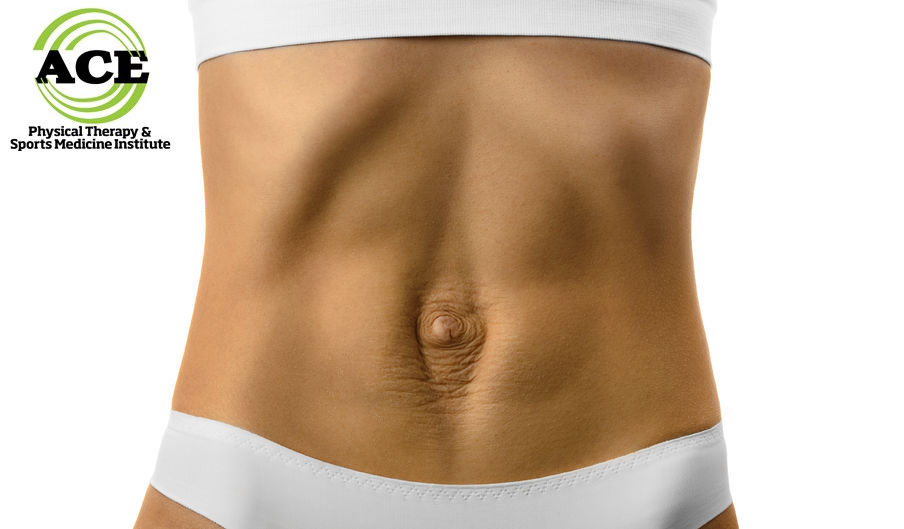DIASTASIS RECTI AND THE POSTPARTUM STOMACH POOCH

Tid Bits of Info
- 3 out of 10 women have some form of diastasis after their first pregnancy.
- 40% of women who suffer diastasis recti are still treating the symptoms 6 months post-partum.
- Initial exercises during the post-partum time period should focus on the pelvic floor muscles.
- Crunches are possibly the worst abdominal exercise for someone who is suffering from diastasis recti.
- Seek advice and treatment from a Physical Therapist who specializes in treating this condition.
After pregnancy, some women continue to look pregnant with a slight ridge running down the center of their stomachs. Known as “Diastasis Recti,” this condition is a result of the abdominal wall of muscle being stretched over the course of pregnancy and eventually tearing. The muscular junction tears in 3 out of every 10 women who go through a full term pregnancy.
The muscles of the abdominal wall provide support and protection to the internal organs and are a major component of the core musculature. If there is damage to the abdominal musculature, it can lead to many other physical problems such as low back pain, incontinence, constipation, painful hips, and pelvic region and pain during sex.
The abdominal muscle that is effected in diastasis recti is the Rectus Abdominus muscle. This is the “six-pack” muscle that courses vertically across the midsection and muscle segments that “form” the six-pack appearance are attached to a central band of connective tissue. This band of tissue has collagen as the main component and during pregnancy, there is a change in hormonal levels that help the female body adapt and change size so the baby has room to grow. As the “belly” expands, the central band of connective tissue is stretched and can tear. Significant weight gain, multiple children births and increased frequency of pregnancy can contribute to the onset of diastasis recti.
The human body is amazing in its ability to adapt and change sizes. The return to pre-pregnancy body size takes time and in many instances, the diastasis recti can heal on its own. There are numerous exercises and precautions that should be taken in the first 3-6 months post-partum time period to enhance the probability of healing. Seeking the advice and treatment from a Physical Therapist who specializes in women’s health or pelvic health can greatly increase your chances of healing the damaged abdominal muscle.
Minor diastasis recti is less than 1 ½ finger width and will almost always heal on its own. Mild measures up to 2 – 2 ½ finger widths and usually does not close completely but specific abdominal exercises performed at the correct time in the recovery process can make the separation a non-factor. Unfortunately, if someone develops a severe case of diastasis recti which can measure 3-5 finger widths and does not heal on its own. This type of condition requires surgery to correct and enable to muscle tissue to resume normal function.
